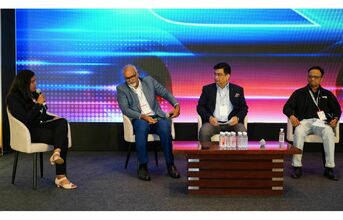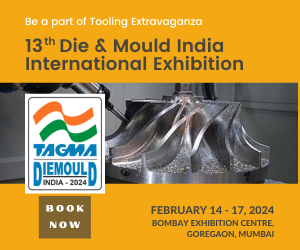
The afternoon witnessed a conversation on ‘Innovations in Lightweighting Technologies and Their Impact on Vehicle Performance,' and shed light on how lightweighting is not just about sleek designs, but oh-so-critical in making them eco-friendly and efficient. Discussing the topic were RT Gugale, Senior General Manager, Purchase, TATA AutoComp Systems Ltd.; BP Shiv, Vice President, TAFE Engineering Plastics Division; and Vilas Baviskar, Assistant General Manager, Corporate Purchase, Fiat India Automobiles Pvt Ltd. (JV of TATA Motors and Stellantis), and it was spearheaded by Nisha Shukla, Assistant Editor, B2B Division, Worldwide Media Pvt. Ltd.
Nisha started the panel as she asked Gugale about the key materials emerging with respect to plastics in terms of lightweighting. Gugale chalked down how the materials used have evolved from mild steel to aluminium to alloys to plastics now. Within the plastic segment, low-density polymers are being used, especially low-density fillers. While earlier fillers were used to increase the density of polymers, now they help us reduce the density of plastic, keeping it around 0.9.
Further, there are material additives, composite materials where carbon fibres are used for glass, to get the same strength with reduced thickness and weight.
Shiv proceeded to discuss potential new technologies and product lines that Indian suppliers could explore in the realm of lightweighting. He acknowledged the success of carbon fibres in Europe, particularly for companies like Mercedes-Benz and BMW. Products such as roofs, rear trunk floors, B-pillars, and door structures have seen successful implementation in Europe. However, Shiv emphasised that, concerning Indian suppliers, this technology is currently expensive and not viable. The critical mass required for carbon fibre-reinforced polymers is still some distance away in India. Glass fibres, too, are making a good solution for products like front-end carriers, tailgate inners, front energy carriers, and beams in India.
In terms of weight savings, plastic tailgates offer a 20 per cent reduction compared to metal, translating to approximately 3-9 kilograms per car and 10 per cent less weight than aluminium. Plastic fuel tanks demonstrate a 25-30 per cent weight reduction compared to metal and have been successfully implemented in India. Front-side fenders (LH and RH) exhibit a 2-5 kg weight saving compared to metal. B-pillars (not currently used in India) could achieve a 3-5 kg weight reduction.
Rear trunk floors contribute to a 3 kg weight saving, while front-end carriers achieve a 2 kg weight reduction. These applications are viewed from the perspective of their potential implementation in India. He elaborated that these applications extend beyond conventional vehicles to include Light Commercial Vehicles (LCVs), Medium Commercial Vehicles (MCVs), and buses. The emphasis on lightweighting in these segments is driven by the evolution of Electric Vehicles (EVs) rather than other factors. Explorations into lightweighting encompass components such as front panels, the front bumper itself, and lower structures. However, these are primarily explored in thermosets rather than thermoplastics.
As Nisha geared the conversation towards challenges in inculcating lightweighting materials in vehicle production, Vilas took the opportunity to highlight obstacles and solutions. He articulated that, as a buyer, his first question to suppliers is always with respect to cost savings. The next question that he asks is whether it is scalable and can meet the required quantities. Further, the next question is whether it sustains and passes through the regulations and compliances, but the solution, according to him, is to work together and get moving.
Shiv also echoed that the real challenge is indeed cost; in addition to this, people also need good styling for their cars, which is also a challenge in India. Further, there is no major drive in India to encourage weight-saving benefits, while in Europe they are offered 3 dollars per kg of weight-saving.
Continue Reading on Page 2





































